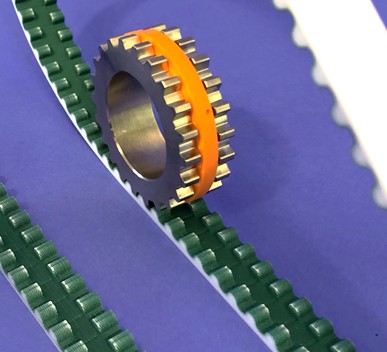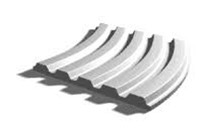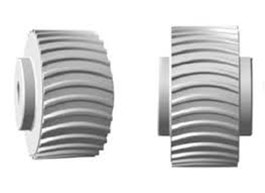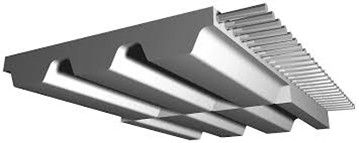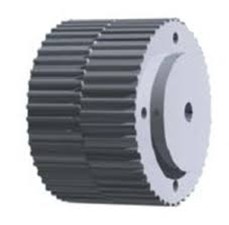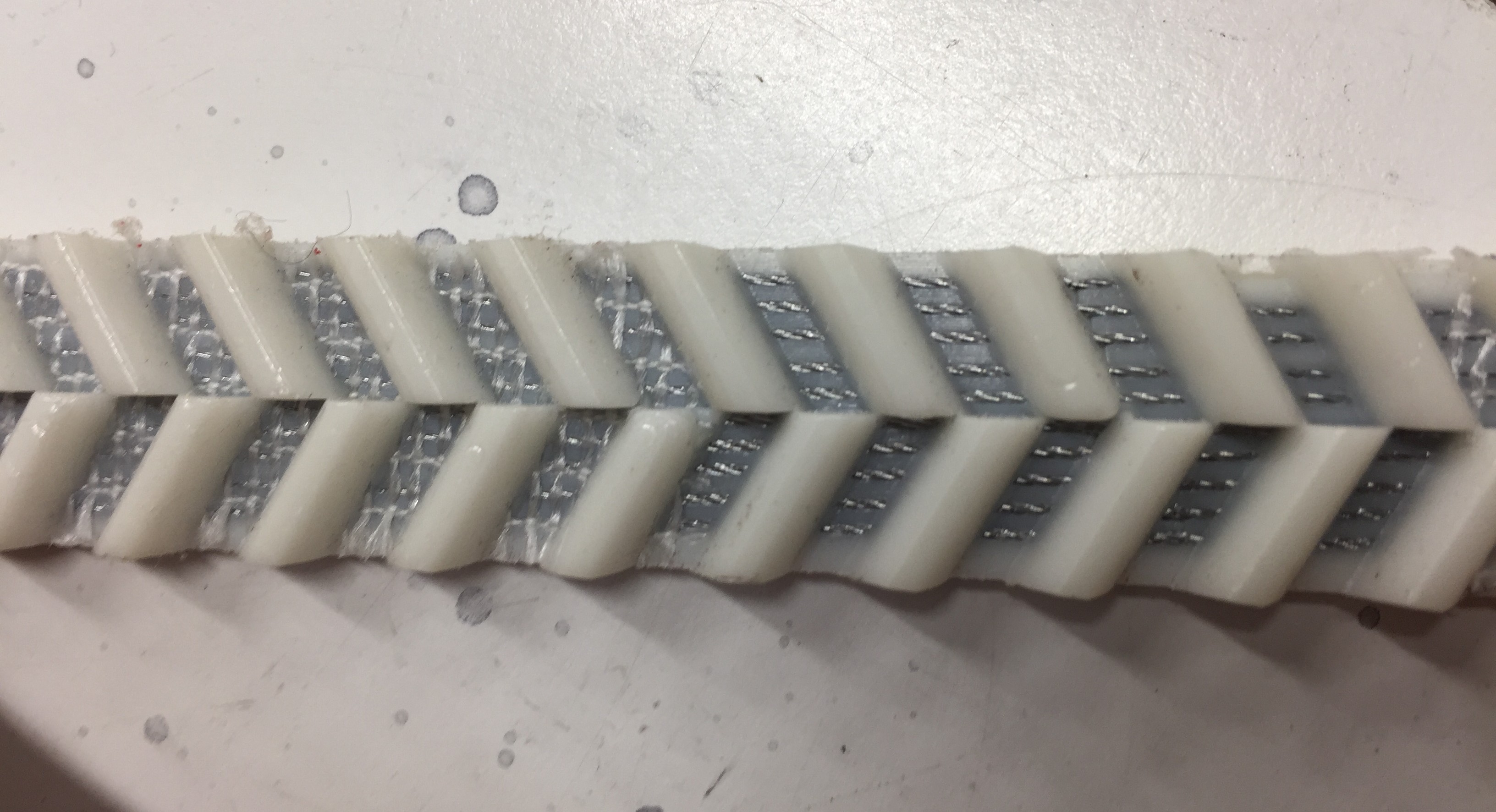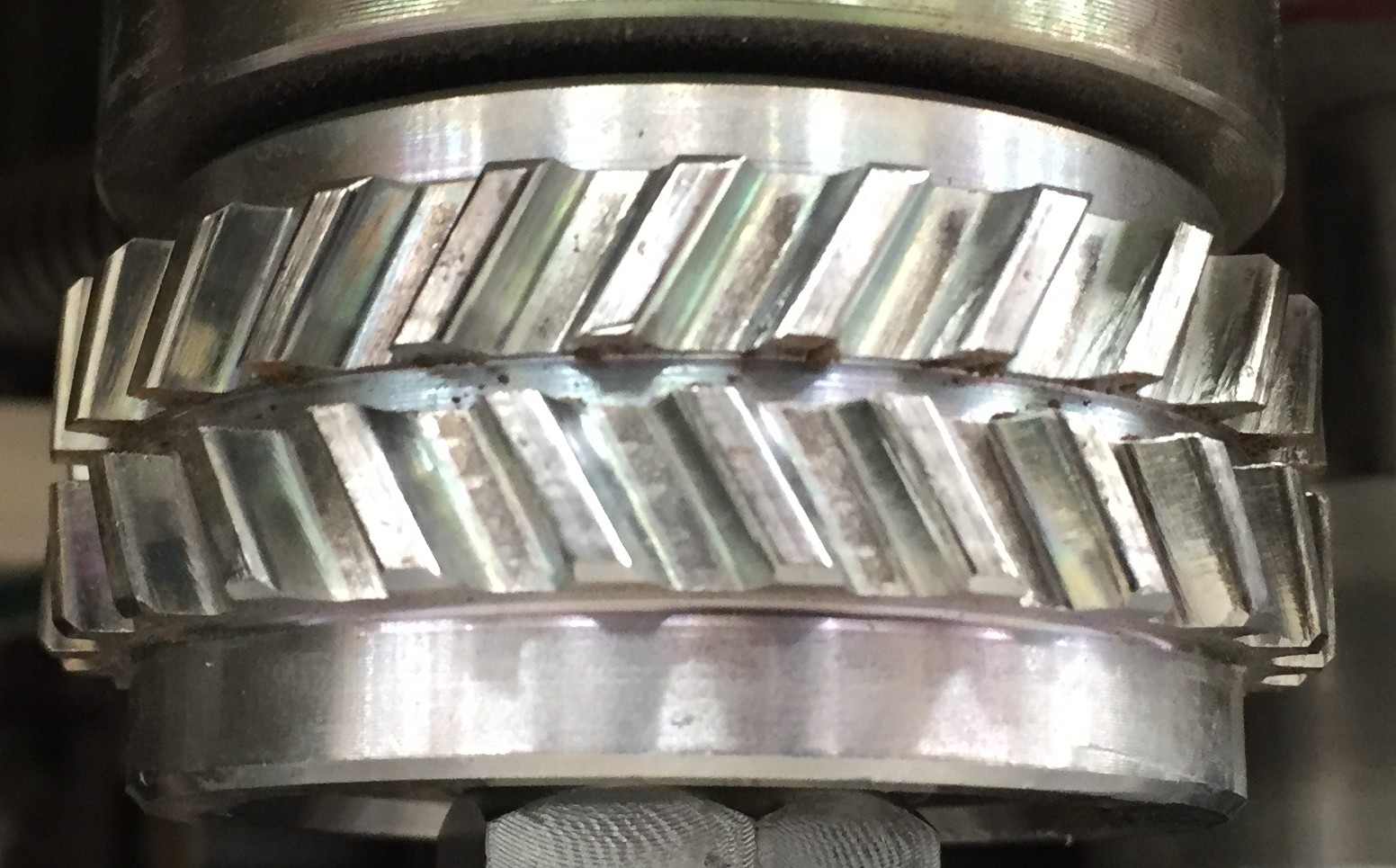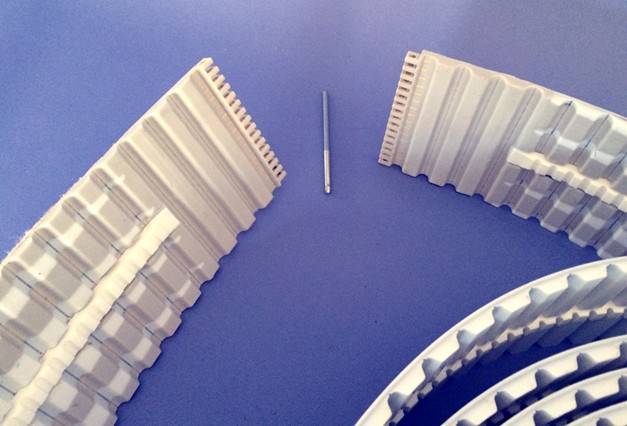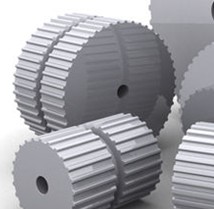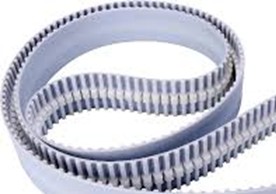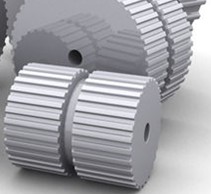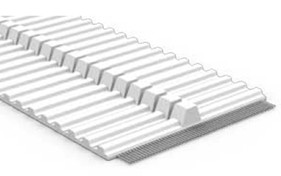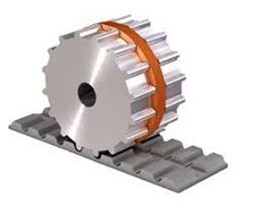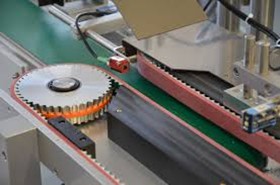ADVANTAGES
- Quieter operation than a spur gear. As quiet as an Eagle Belt
- Self-guiding Belt
- No flanges, so reduced width, total weight and inertia
- Low backlash tooth profile - ideal for high-precision movements
- Reversible operation possible
- Low energy consumption
- Accepts large pulley misalignments
- Can be used tangentially.
GeQo Drive combines the advantages of SFAT belts and easy drive® guidance to be as quiet as Eagle belts.
Using the BAT tooth profile
The BAT tooth profile corresponds to the AT profile, but the teeth are curved. The Belt is guided and self-centring (no lateral drift possible). There is no need for flanges on the Pulleys. The BAT profile (circular arc) belt also reduces noise and optimises the meshing of the BAT belt.
Caution: the Pulleys must be perfectly aligned as they can only turn in one direction. To operate in both directions of rotation, the BATK profile with drive guide must be used.
ADVANTAGES
- Self-guiding: no flanges required
- Very low noise level: less vibration when meshing
- Very low polygon effect (any Belt moving around a Pulley describes a polygon -> generating speed variations)
- No vibration when using carrier rollers or idler pulleys on the tooth side (no minimum winding angle).
DISADVANTAGES
- The price
- Only works in one direction
- There is no quick-assembly system for this toothing.
Recommended use:
Special requirements for smooth running and transmission precision
Using the BATK tooth profile
The BATK type Synchronous belts are derived from the BAT timing belt. The Belt is self-steering in both directions of travel thanks to an integrated drive guide.
Recommended use:
Special requirements in terms of smooth running and transmission precision
Limited installation dimensions
Application in linear and other drive technology.
Using the SFAT tooth profile
The SFAT type tooth profile is based on the AT profile, but the teeth are offset by half a pitch. Each Belt is divided longitudinally into two equivalent but offset tooth zones. These belts are designed for use with adapted Synchronous Pulleys. It is not necessary to use flanged Pulleys.
Recommended use:
Running on synchronous pulleys without flanges
Increased requirements for smooth running (reduced polygon effect)
ADVANTAGES
- Better meshing quality for longer service life
- Self-guiding: no flanges required
- Reduced noise level: the impact of meshing is limited, so the transmission is quieter
- Maximum transmissible power: the entire width of the teeth is used
- Reduced polygonal effect
- Reduced vibration: when using support rollers or rollers.
DISADVANTAGES
- Does not accept large pulley misalignments (premature wear in the centre)
- Price
- No quick-assembly system exists for this gearing
PRECAUTIONS FOR USE
Caution: Pulleys must be correctly aligned, otherwise the teeth will be subject to rapid abrasion in the centre due to the guide.
Using the Eagle herringbone tooth profile
This herringbone belt and pulley design, known as H.O.T (Helical Offset Tooth), provides a quiet drive and high-precision synchronisation. No flanges are required. Particularly suitable for conveyor applications. Direction reversal is possible without reservation. Eagle polyurethane Timing belts are fitted as standard with steel Cords and polyamide fabric on the teeth.
ADVANTAGES
- Quieter operation than with straight teeth
- Self-guiding Belt
- No flanges, so reduced width, total weight and inertia
- Low backlash tooth profile - ideal for high-precision movements
- Reversible operation possible.
DISADVANTAGES
- Price
- Friction due to angled teeth. The two functions (guiding and transmission) are combined.
- Energy consumption
- Premature wear in the event of misalignment of the Pulleys.
- There is no quick assembly system for these teeth.
Using Synchronous belts with drive guides
Self-aligning timing guide belts are a combination of standard belts and special polyurethane V-belt drive guides. These guarantee extreme flexibility and allow the use of small-diameter Pulleys.
The drive guide is fused onto the belt after a groove has been milled.
ADVANTAGES
- For use with pulleys without flanges
- Insensitive to lateral pressure thanks to belt guidance
- Reduces lateral belt movements
- Suitable for all belt widths and Timing belt pitches
- Available with ERO Joint® HP quick-assembly system
Applications
- Transport applications
- Handling applications
- Conveying applications
- Positioning applications
Using Synchronous belts with an extruded Co drive guide
Timing belts with an extruded Co guide are a combination of Synchronous belts and V-belts. The performance range corresponds to normal T or AT profiles, minus the width of the non-toothed belt. They perform better than Timing belts with a drive guide insert (better mechanical strength, more flexible in bending, more durable).
ADVANTAGES
- Can be used without a flanged pulley
- Insensitive to lateral pressure thanks to a drive guide on the belt (belts with extruded Co guides withstand the highest loads compared with other guide systems)
- Reduced lateral movement of the Belt
- Accepts smaller winding diameters than drive guide Timing belts
- Available with ERO Joint® HP quick assembly system.
Applications
- Conveyor applications
- Handling applications
- Conveying applications
- Positioning applications
Using Synchronous belts with Easy Drive® guide rings
The Easy Drive® guide offers high directional stability for all tooth shapes, pitches and materials.
The Easy Drive® guide ring engages precisely in the Pulley.
The Belt no longer moves and the guidance is perfect.
ADVANTAGES
- for PU and neoprene belts
- compatible with all tooth pitches and shapes
- Pulley available in any material (Steel, Aluminium, Cast Iron or Delrin)
- universal solution avoiding flanged pulleys
- reduced vibration
- smaller pulley footprint
- price comparable to a Timing belt solution with guide profile
- Available with ERO Joint® HP quick-assembly system
Easy Drive® is a registered trademark of BELTING GROUP GmbH. All rights reserved.
Pulley guide flanges:
These are used to guide the Belt over the teeth of the Pulley.
The clearance between the Belt and the flanges is between 2 mm and 4 mm.
For standard belts, the inside width between flanges is toleranced in accordance with DIN ISO 2768-1 to allow for belt width tolerances and possible misalignment.
DISADVANTAGES
Pulley flanges do not allow guiding over long lengths (particularly in the case of conveying), so guide profiles must be added under the belts. In the case of side loading and/or heavy loads, a guide integrated into the Belt is imperative.

